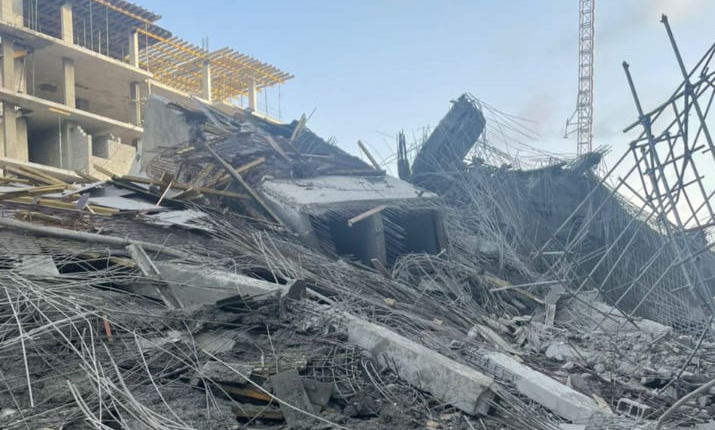Experts in the built environment have said the accidental collision of a truck cannot trigger a total collapse of a properly built structure.
The Lagos State Emergency Management Agency had in a statement claimed that the recently collapsed building on 1st Avenue, in the Banana Island area of Ikoyi, Lagos State the collapse was a result of a truck that ran into the building.
It stated, “Situation report on the collapsed building at 1st Avenue, Banana Island, Ikoyi. Upon the arrival of the LASEMA response team at the scene of the incident, a seven-storey building under construction was found to have collapsed. Information gathered revealed that the building collapsed as a result of a truck that ran into the building.
“Fortunately, no loss of life. However, forts are ongoing to reconstruct the building to ground zero so as to forestall any secondary incident.”
Faulting LASEMA’s claim, the Principal Architect, AD Consulting, Olajumoke Adenowo, argued that the narrative that a cement truck ran into a column was flawed.
She said, “A cement truck running into one column cannot bring down a properly designed and executed structure the way this one came down. A building does not rest all its load on one singular column. This is the beginning of a narrative to exonerate culpable parties.”
In the same vein, in an exclusive interview with our correspondent, an architect, Sogo Oyesode, said a truck cannot hit one column and cause the entire building to crumble.
He said, “The entire building is already structurally stressed. It is just a matter of time before the building would have still collapsed with or without the impact of any vehicle. It is better that the building collapsed now than collapsing may be six or nine months later, when there are more activities going on with plenty people in the building. The number of casualties would have been terrific.
“Accidental collision of a truck on a building cannot trigger that level of collapse seen. It is not possible. The collision must have been an intentional collision and the collision would be multiple instances on different sides of the building before such a collapse will happen. However, when that happens, you know they are trying to intentionally demolish the building.”
Adenowo noted that the failure of Nigerians to engage professionals was contributing to the prevalence of building collapses.
She said, “Clients get what they pay for. Many Nigerians are unwilling to pay what they should for standard professional services, preferring to work with ‘professionals ‘who would take any amount they offer. Be aware that those who cut corners on fees will cut corners on your project and make the money elsewhere on that project at your expense.
“Some clients are sincerely baffled as to how to hire good professionals. This is done exactly the way you hire a good neurosurgeon, through referrals, not trials. Some of these clients see buildings that they like and ask their architects to copy the buildings. Sadly, many professionals promise and do not deliver. Hence, it is, therefore, the client’s responsibility in the first instance to hire competent professionals and exercise due diligence in doing so.”
According to her, the agencies tasked with regulating issues of construction safety need to step up, as there were gaps in the system.
In this article

